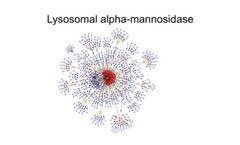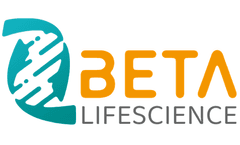Refine by
Risk Assessment Articles & Analysis
79 articles found
Understanding a patient’s CYP genotype can aid physicians in selecting the right medication dosage and minimize the risk of adverse drug reactions. Environmental Impact and Toxicology In addition to drug metabolism, cytochrome P450 enzymes are involved in the metabolism of environmental chemicals and toxins. ...
Purity and Concentration Analysis ServicePurity and concentration analysis is a fundamental service that assesses the quality of the RDC drug before it progresses to further testing. ...
Distribution describes the dispersion of the drug throughout the body. This involves assessing how a drug binds to plasma proteins and how it penetrates various tissues. ...
Comprehensive design validation involves requirement analysis, usability testing, risk assessment, and performance testing. Verification, on the other hand, involves a range of tests from document review to product testing, ensuring every aspect of the design is up to standard. ...
ImmunoblottingSuch as western blotting, it's suitable for detecting specific, potentially high-risk HCPs.4. Risk AssessmentIn addition to quantitative analysis, risk assessment of HCPs is also important to determine which HCPs may pose a greater risk to product quality or patient safety.5. ...
Fundamentally, TK studies provide an understanding of the systemic exposure-risk relation and delivery of safety data for the dose-response analysis. ...
When developing drugs, sequencing antibodies can help us understand the structure and function of antibodies, guiding humanization modifications to retain the affinity and specificity of antibodies. Assisting Risk Assessment and Quality Control Through in-depth analysis of antibody sequences, we can predict potential immunogenicity and toxicity ...
The main risk associated with HCP is immunogenicity and they have the potential to affect the safety and efficacy of a given drug product. ...
The Human Health Risk Assessment (HHRA) Note Number 3, revised in May 2022, includes detailed information about the California Department of Toxic Substances Control (DTSC) development of modified screening levels based on the U.S. ...
If the comparability of the mAb intermediate cannot be determined, but comparability of the DS and/or DP has been successfully demonstrated, a risk assessment of the differences in the mAb intermediate is recommended.Process Changes for DSChanges in the ADC production process should be treated the same as process changes in other macromolecule products. The ...
Therefore, HCPs in products need to be monitored and controlled to support risk assessment. In general, regulatory agencies require HCP levels in the final drug substance to be less than 100 ppm. ...
While current evidence suggests that the tumorigenic risk of residual DNA is lower than the infectious risk, caution should be exercised considering that tumorigenicity experiments are conducted in animals, and infectious experiments are performed at the cellular level. ...
During this period, detecting these cells does not provide a definitive diagnosis but can only serve as a risk assessment for tumors. It does not have screening significance and can cause great anxiety to the screening subjects. ...
Mental health is a critical concern for all companies. One in five individuals will experience a mental health problem during their lives, according to the World Health Organization. For many people, the workplace is where mental health problems first begin and/or become exacerbated. ...
When selecting a CDMO, it is crucial to choose a visionary team that is committed to the success of your project. To assess potential CDMOs, certain criteria should be considered, such as how they identify critical project parameters, their past successes in overcoming challenges, and their approach to data analysis using a risk-based methodology. It is ...
On successful completion, INOVIQ will need to conduct additional studies to further develop and validate the SubB2M-based SPR test for risk assessment of multiple cancers. “Based upon the [previous] compelling SubB2M-based SPR results, INOVIQ is excited by the potential to develop SubB2M-based SPR tests for multi-cancer detection and monitoring,” ...
Its applications include variation and risk assessment in disease genomics, analysis of changes in transcriptomic gene expression, revealing epigenetic effects on tissue and organ development, and heterogeneity at the single-cell level, among others. ...
The use of them can improve the detection of genetically heterogeneous disorders and diseases with overlapping phenotypes, while assessing multiple potential genetic causes of suspicion. Most of the currently commercially available panels use two target enrichment strategies. ...
Increased risk of different cancer types in workers employed in petroleum industries and residents living in oil producing communities by Felix Onyije, Bayan Hosseini, Kayo Togawa, Joachim Schüz, and Ann Olsson Considerable health conditions are caused by environmental pollutants, including emissions from petroleum extraction and refining. They are major sources of environmental and ...
More serious conditions include: High blood pressure Heart problems Type 3 diabetes Liver problems Those dealing with OSA are at increased risk of accidents and have significantly higher rates of cardiac arrest and death. ...
















